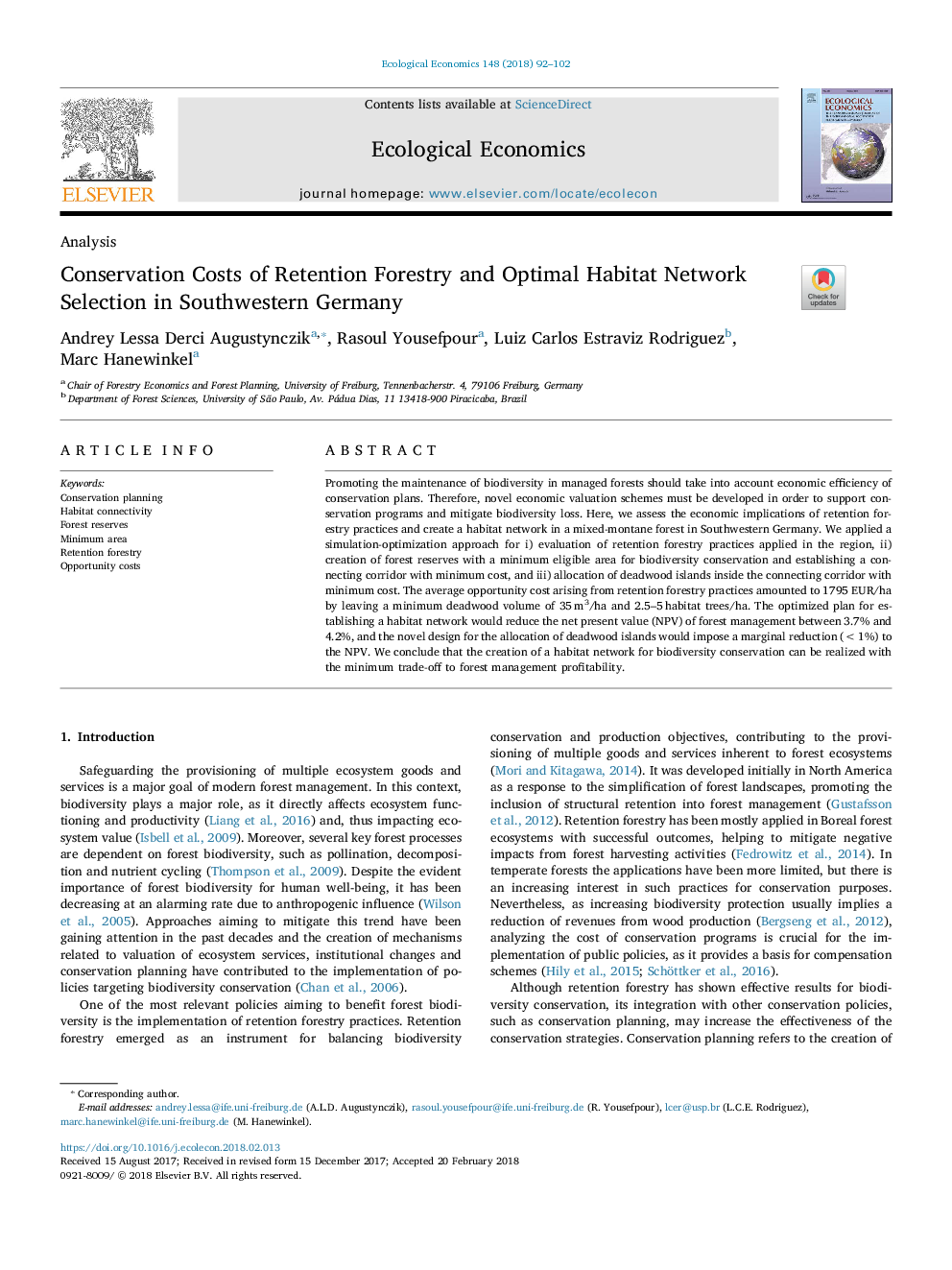ترجمه فارسی عنوان مقاله
هزینه های نگهداری جنگلداری و انتخاب شبکه های بهینه سازی در جنوب غربی آلمان
عنوان انگلیسی
Conservation Costs of Retention Forestry and Optimal Habitat Network Selection in Southwestern Germany
| کد مقاله | سال انتشار | تعداد صفحات مقاله انگلیسی |
|---|---|---|
| 135661 | 2018 | 11 صفحه PDF |
منبع

Publisher : Elsevier - Science Direct (الزویر - ساینس دایرکت)
Journal : Ecological Economics, Volume 148, June 2018, Pages 92-102
ترجمه کلمات کلیدی
برنامه ریزی حفاظت، اتصال به محیط زیست، ذخایر جنگلی، حداقل منطقه، حفظ جنگلداری، هزینه فرصت،
کلمات کلیدی انگلیسی
Conservation planning; Habitat connectivity; Forest reserves; Minimum area; Retention forestry; Opportunity costs;

